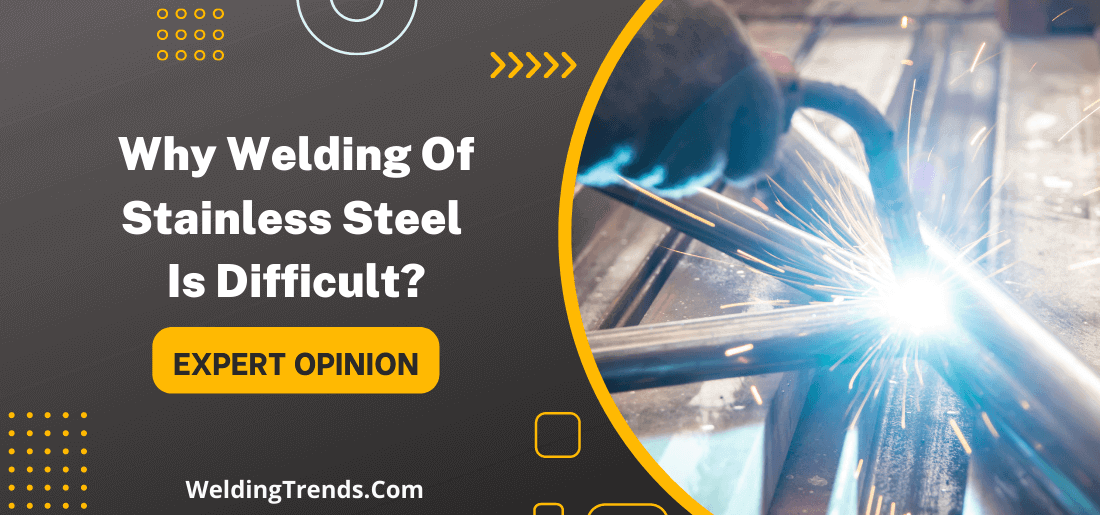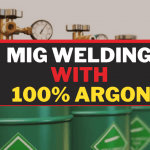Welding stainless steel is not an easy task. It is difficult to weld because the metal has a high resistance to heat and is difficult to melt. The metal tends to crack when welded. This makes it necessary to take special care when welding stainless steel. In addition, stainless steel can be brittle and hard to weld due to its high carbon content.
If you are new to welding and you are welding stainless steel for the first time, be sure to do your research and practice before attempting a project. With a little bit of preparation, you should be able to successfully weld stainless steel using the right techniques and equipment.
Proper preparation and use of the right equipment are essential for a successful weld. Failure to follow these steps can result in a poor-quality weld that may not be strong enough to hold up under stress.
difficulties in welding stainless steel and why it is challenging?
Welding stainless steel can be quite difficult because of its high carbon content. This makes the metal very hard to weld without causing it to crack. Cracks in stainless steel can not only weaken the structure, but they can also allow contaminants to enter the metal, which can cause corrosion.
There are a few ways to avoid these problems, but they all require careful planning and execution.
- One way to weld stainless steel without causing cracks is to use a low carbon filler metal. This can help to reduce the amount of heat that is transferred to the metal, which can help to prevent cracking.
- Another way to reduce the risk of cracking is to use a higher welding speed. This will help to create a more even weld bead and will help to prevent the formation of cracks.
- Finally, it is important to use a welding technique that will not create too much heat. This can be done by using a lower current setting or by using a pulse welding technique. If you are having difficulty welding stainless steel, it is important to consult with a professional welder who can help you determine the best way to weld the metal.
important factor to consider when welding stainless steel
1) Choose Right Welding Rod
When welding stainless steel, it is important to use the correct welding rod. Stainless steel welding rods are different from regular welding rods in that they have higher heat resistance. This means that they will not melt as easily when exposed to the high temperatures created by the welding process. The correct type of stainless steel welding rod should be used for the project at hand.
If you are unsure of which type of stainless steel welding rod to use, consult with a professional or do some research online. There are many resources available that can help you select the right type of rod for your project.
2) Welder Amperage Setting
Another important factor to consider when welding stainless steel is the welder’s amperage setting. The amperage setting on a welder controls the amount of heat that is produced by the welding process. If the amperage is set too high, the weld may not be strong enough. If the amperage is set too low, the metal may melt and cause the weld to be weak.
It is important to find a balance when setting the welder’s amperage. The best way to do this is to practice on scrap pieces of stainless steel before attempting to weld on the project piece. This will help you get a feel for how much heat is necessary to produce a strong weld.
3) Clean Welding Area
One final factor to consider when welding stainless steel is cleanliness. It is important to keep the area around the weld clean and free of debris. Any dirt or debris that is present can weaken the weld. In addition, it is important to clean the metal before welding.
This can be done by using a wire brush or sandpaper to remove any dirt or rust that is present on the surface of the metal. This will help to create a stronger bond between the metals being welded.
Precaution to Use Equipment While Welding SS
With proper preparation and the use of the right equipment, welding stainless steel can be a successful process. Be sure to take your time and practice before attempting a project.
With a little bit of care and attention, you should be able to produce a strong and quality weld.
- Use the correct type of welding rod
- Practice on scrap pieces of stainless steel
- Set the welder’s amperage correctly
- Keep the area around the weld clean
- Clean the metal before welding
- Take your time and be careful
Welding stainless steel is not an easy task, but it can be done successfully if you follow the proper steps.
Be sure to use the correct type of welding rod, set the welder’s amperage correctly, keep the area around the weld clean and take your time. With a little bit of care and attention, you should be able to produce a strong, quality weld.
Here is video that tells you about some tips & tricks while welding of stainless steels:
FAQs Regarding Welding Of Stainless Steel
Which welding is best for stainless steel?
There is no definitive answer to this question. Each type of welding has its advantages and disadvantages, and the best type of welding for stainless steel will vary depending on the specific project.
Some common types of welding that can be used for stainless steel include MIG welding, tig welding, and stick welding. Consult with a professional or do some research online to determine which type of welding is best for your particular project.
Which type of stainless steel is not weldable?
Some types of stainless steel are not weldable. These include martensitic and austenitic stainless steel. If you are unsure of which type of stainless steel you have, consult with a professional or do some research online.
Can I weld stainless steel to aluminum?
Yes, you can weld stainless steel to aluminum. However, you will need to use a different welding process than you would use for welding two pieces of stainless steel together.
Some common welding processes that can be used for welding stainless steel to aluminum include tig welding and MIG welding.
Which electrode is used for stainless steel?
There are a few different types of electrodes that can be used for welding stainless steel. The specific electrode that you will need to use will vary depending on the type of welding process being used.
Some common electrodes that can be used for welding stainless steel include E308, E316, and E347.
Wrap Up
Stainless steel welding is a difficult process that should only be attempted by those who have the proper training and experience.
Because the metal has a high resistance to heat and corrosion. In order to weld stainless steel properly, you need to use the right equipment and techniques. With the right tools and know how you can create strong and durable welds on stainless steel surfaces.
By understanding why welding stainless steel is so difficult, you can take the necessary precautions to ensure your project goes as smoothly as possible.




